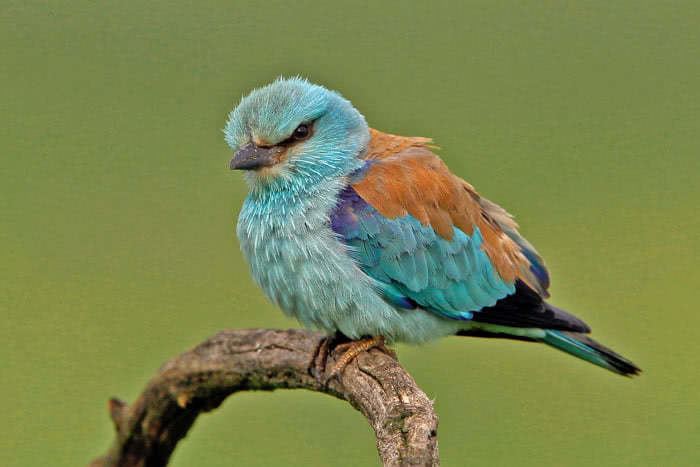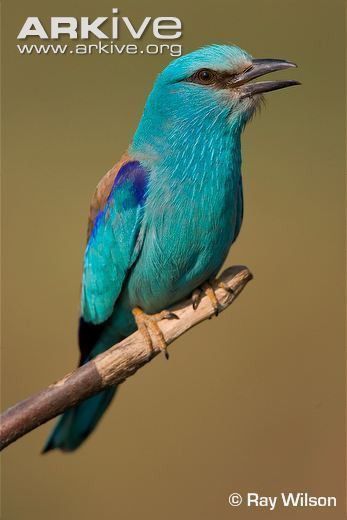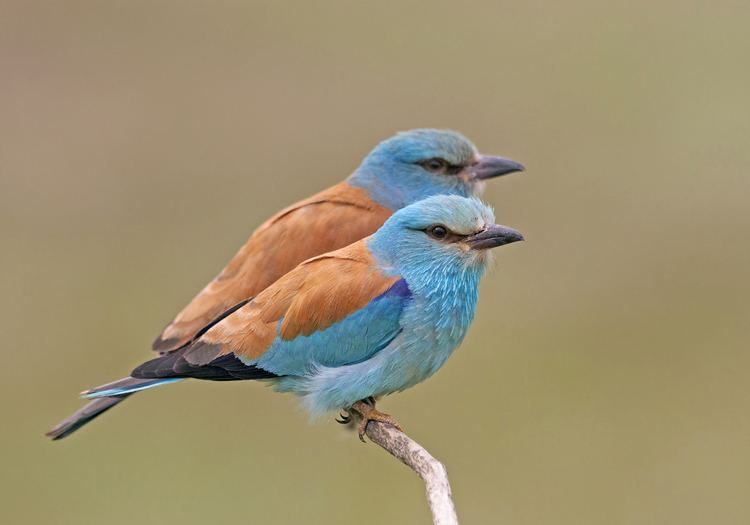Phylum Chordata Family Coraciidae Scientific name Coracias garrulus Rank Species | ||
 | ||
Similar Bird, Coracias, Eurasian stone‑curlew, Northern wheatear, Squacco heron | ||
Nest box for birds hoopoe and european roller
The European roller (Coracias garrulus) is the only member of the roller family of birds to breed in Europe. Its overall range extends into the Middle East, Central Asia and Morocco.
Contents
- Nest box for birds hoopoe and european roller
- Taxonomy and systematics
- Subspecies
- Description
- Distribution and habitat
- Status
- Cited texts
- References

The European roller is found in a wide variety of habitats, avoiding only treeless plains. It winters primarily in dry wooded savanna and bushy plains, where it typically nests in tree holes.

Taxonomy and systematics

The rollers are medium-sized Old World birds of open woodland habitats. They have brightly coloured plumage and a hooked bill. Most are found south of the Sahara. The genus Coracias contains eight species of sit-and-wait hunters. The European roller is similar in appearance and behaviour to the Abyssinian roller, which appears to be its closest relative. These two birds and the lilac-breasted roller seem to share a common ancestry and could possibly be considered to form a subspecies.

The European roller was described by Linnaeus in his Systema naturae in 1758 under its current name. The genus name derives from Greek; korakias refers to a type of crow, perhaps the red-billed chough. The species garrulus is from Latin and means chattering or noisy. Alternate names include the blue roller, common roller, Eurasian roller, or simply roller.
Subspecies
There are two subspecies recognised:

Description

The European roller is a stocky bird, the size of a jackdaw at 29–32 cm in length with a 52–58 cm wingspan; it is mainly blue with an orange-brown back. Rollers often perch prominently on trees, posts or overhead wires, like giant shrikes, whilst watching for the large insects, small reptiles, rodents and frogs that they eat.
This species is striking in its strong direct flight, with the brilliant blue contrasting with black flight feathers. Sexes are similar, but the juvenile is a drabber version of the adult.
The display of this bird is a lapwing-like display, with the twists and turns that give this species its English name. It nests in an unlined tree or cliff hole, and lays up to six eggs.
The call is a harsh crow-like sound. It gives a raucous series of calls when nervous.
Distribution and habitat
The European roller is a bird of warmer regions. The nominate subspecies breeds in northern Africa from Morocco to Tunisia, in southern and east-central Europe, and eastwards through northwestern Iran to southwestern Siberia. The subspecies C. g. semenowi breeds from Iraq and southern Iran east through Kashmir and southern Kazakhstan to Xinjiang. The European range was formerly more extensive, but there has been a long-term decline in the north and west, with extinction as a nesting bird in Sweden and Germany. The European roller is a long-distance migrant, wintering in Sub-Saharan Africa in two distinct regions, from Senegal east to Cameroon and from Ethiopia west to Congo and south to South Africa. Some populations migrate to Africa through India. A collision with an aircraft over the Arabian Sea has been recorded.
It is a bird of warm, dry, open country with scattered trees, preferring lowlands, but occur up to 1000 m (3300 ft) in Europe and 2000 m (6600 ft) in Morocco. Oak and pine woodlands with open areas are prime breeding habitat, but farms, orchards and similar areas with mixed vegetation are also used. In Africa, a similarly wide range of dry open land with trees is used. It winters primarily in dry wooded savanna and bushy plains, where it typically nests in tree holes.
Status
The Eurasian roller has an extensive distribution in Europe and western Asia, and its European breeding population is estimated at 159,000 to 330,000 birds. When Asian breeders are added, this gives a global total population of 277,000 to 660,000 individuals. There have been fairly rapid population declines across much of its range, so it was formerly classified as Near Threatened by the International Union for Conservation of Nature in 2005; it has however, been downlisted to Least Concern in 2015, as population development was judged to not meet the criteria for a more urgent rating at this time. The European population declined by 25 percent between 1990 and 2000. The northern areas of the breeding range have fared worst, with numbers in the Baltic states and northern Russia collapsing, and no birds left breeding in Estonia.
Threats include hunting while on migration in around the Mediterranean, and large numbers, possibly in the thousands, are killed for food in Oman. Agricultural practices have led to the loss of trees and hedges which provide potential nest sites and perches for hunting, and pesticides have reduced the availability of insect food.
